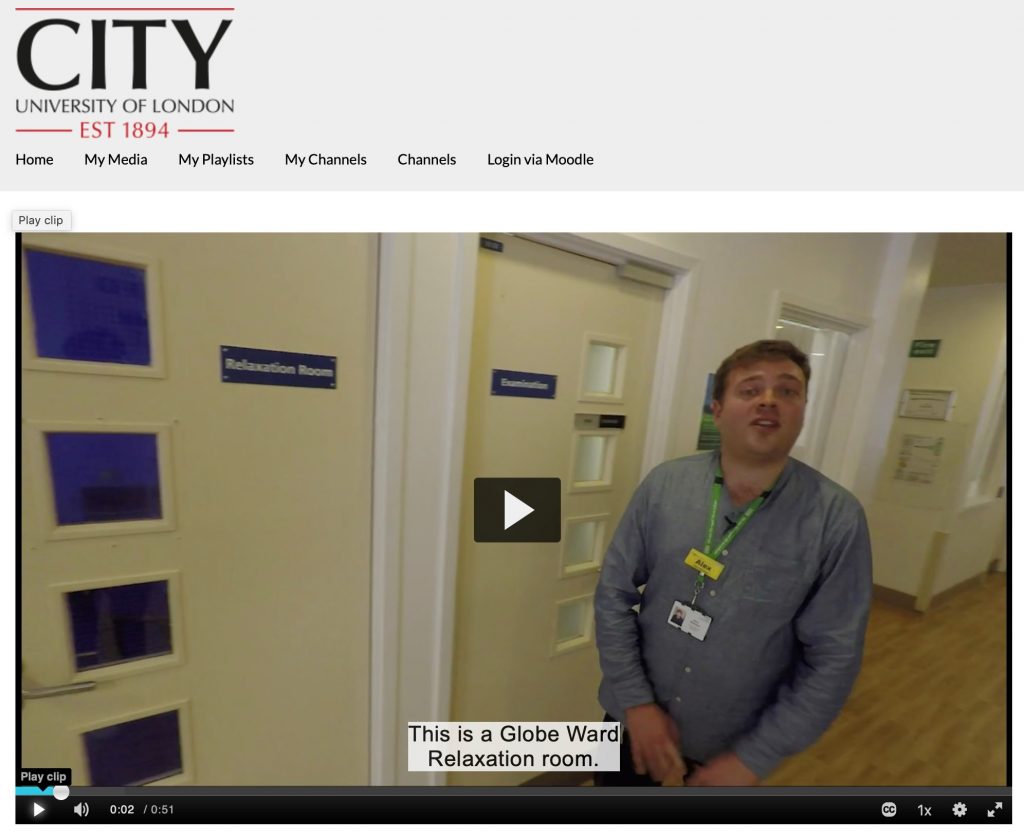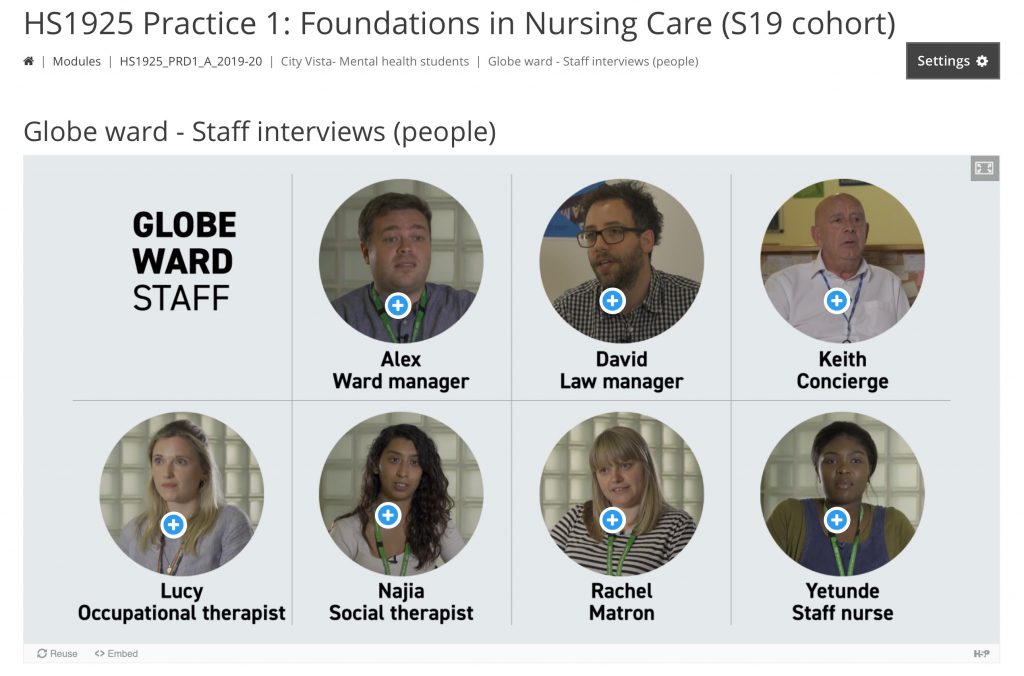There are a limited number of resources available to students to prepare them for working in mental health units and understanding the experience of service users [patients]. This interactive resource follows a service user’s experience into hospital. ‘City Vista’ guides students to open doors that takes them on a virtual tour. ’City Vista’ was created last year, before we knew what impact the Coronavirus pandemic would demand on the university. The programme content will be even more useful if social distancing measures prohibit face to face teaching for the new academic year, as the content can be accessed remotely and students can engage in online assessment activities and synchronous sessions having gone through the programme first.
‘City Vista’ is a blended learning programme for nursing students with multimedia and video content that is embedded into Moodle, the VLE at City, University of London. Nursing students training to support mental health patients who are admitted to hospital, need a clearer idea of what is meant by compassionate care, with the aim to develop greater empathy competencies. Soft skills training is ideally suited to video and interactive content as an accessible and engaging format alongside face to face teaching in a blended learning environment. The teaching need identified that this type of interactive video could enhance student’s empathy which was a key learning outcome for this project.

The main learning outcome was to prepare nursing students for their first experience of going out on placement in mental health hospitals, a sometimes daunting but essential experience as part of their development on the nursing degree course. The video content provided them with a virtual introduction by the NHS staff on a typical mental health ward and delivered a narrative from previous patients who described their own experiences and observations of being in hospital.
This was an innovative project for the University, as I led a small production team with little professional video experience. We took a blended learning approach using multimedia and video to what would typically have been a TV documentary with print-based handouts. I believe our methodology for filming was truly innovative. We had to film on a mental health ward in a busy London hospital, so having carried out a risk assessment and site visits, I planned to record with small and lightweight equipment, so as to be less obtrusive, and be more agile, so to avoid any cables across the floors. For the virtual tour of the ward, the camera operator wore a head-mounted GoPro camera, I wirelessly connected my iPhone to the GoPro to monitor the images as well as to control the recording. For sound, the senior nurse talking to camera wore a radio microphone and transmitter, which was connected to a receiver that I wore on my belt that was connected to a digital audio recorder in my pocket.

There is much written about the expectations of students and their sophisticated viewing habits, so we felt it was important to film in high definition video, with clear sound reproduction and broadcast quality lighting. It was also important to aim for high quality video as all content is encoded and downsized to our media storage and viewing platform, as well as the likelihood of students viewing the resource on their own mobile devices.
In terms of the technology, I took a very collaborative approach in this project. One of the team had experience of authoring with H5P, an interactive tool that he integrated within Moodle, and created links from H5P hotspots from a graphical map of the hospital ward. This was designed so that staff could operate from within Moodle for ease of use in class and being later viewed by students to access the programme within Moodle.
The filming on the ward had to be carefully planned as it was a challenging project to acquire the material. We had to exclude any patients for privacy and security reasons and also to avoid being disruptive to their time in hospital, as patients were suffering from varying degrees of mental illness, some of whom were in an acute state. Separately we filmed interviews with a number of recovering patients and their carers, where the right blend of empathy, tact and diplomacy was essential to reach the right on-camera responses needed for the project.
The primary aim of City Vista was to engage students with authentic material. The formative evaluation showed that the majority of students found the videos to be very effective and impactful in providing them with valuable insights into the realities of working on a mental health hospital ward.

Author
James Rutherford, Educational Technology Project Lead at City, University of London














